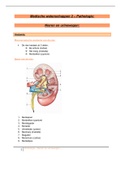Resume
Summary INFOMDWR Data Wrangling and Data Analysis 2022/2023
- Cours
- Établissement
This summary contains all the theory provided in the INFOMDWR course in 2022/2023. This includes elaborate description and practical examples of the concepts. This will help you preparing for the exam!
[Montrer plus]












